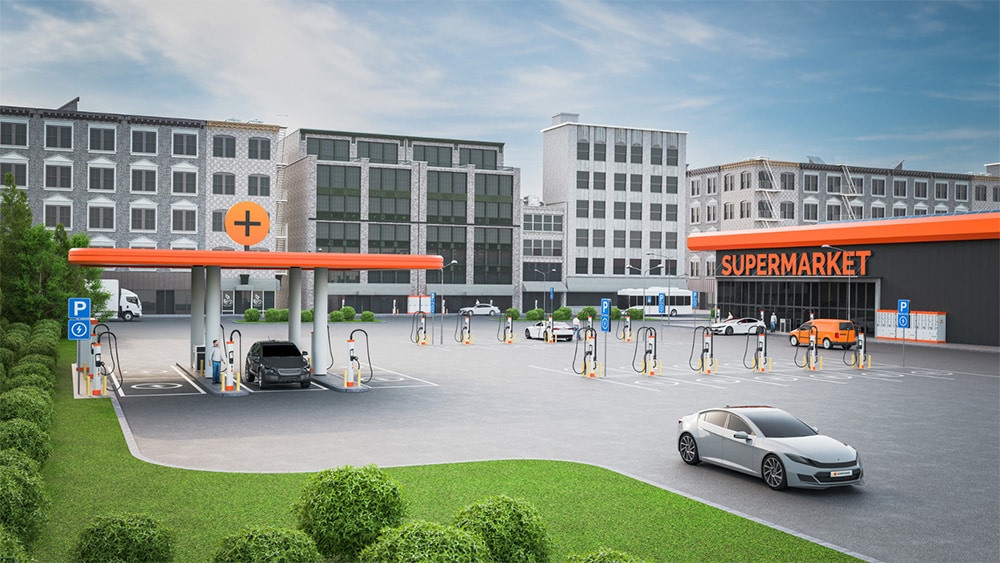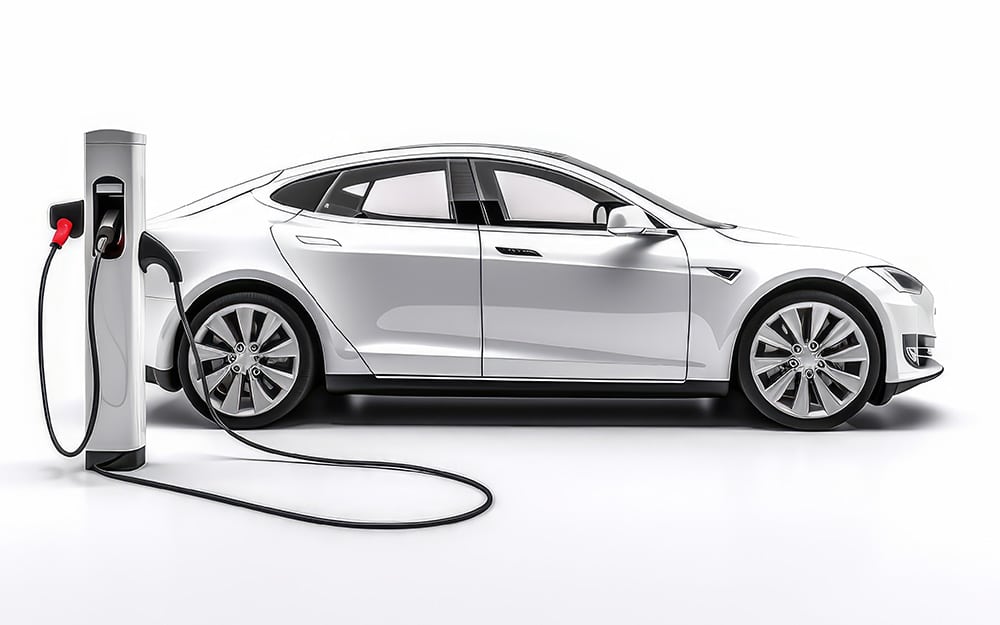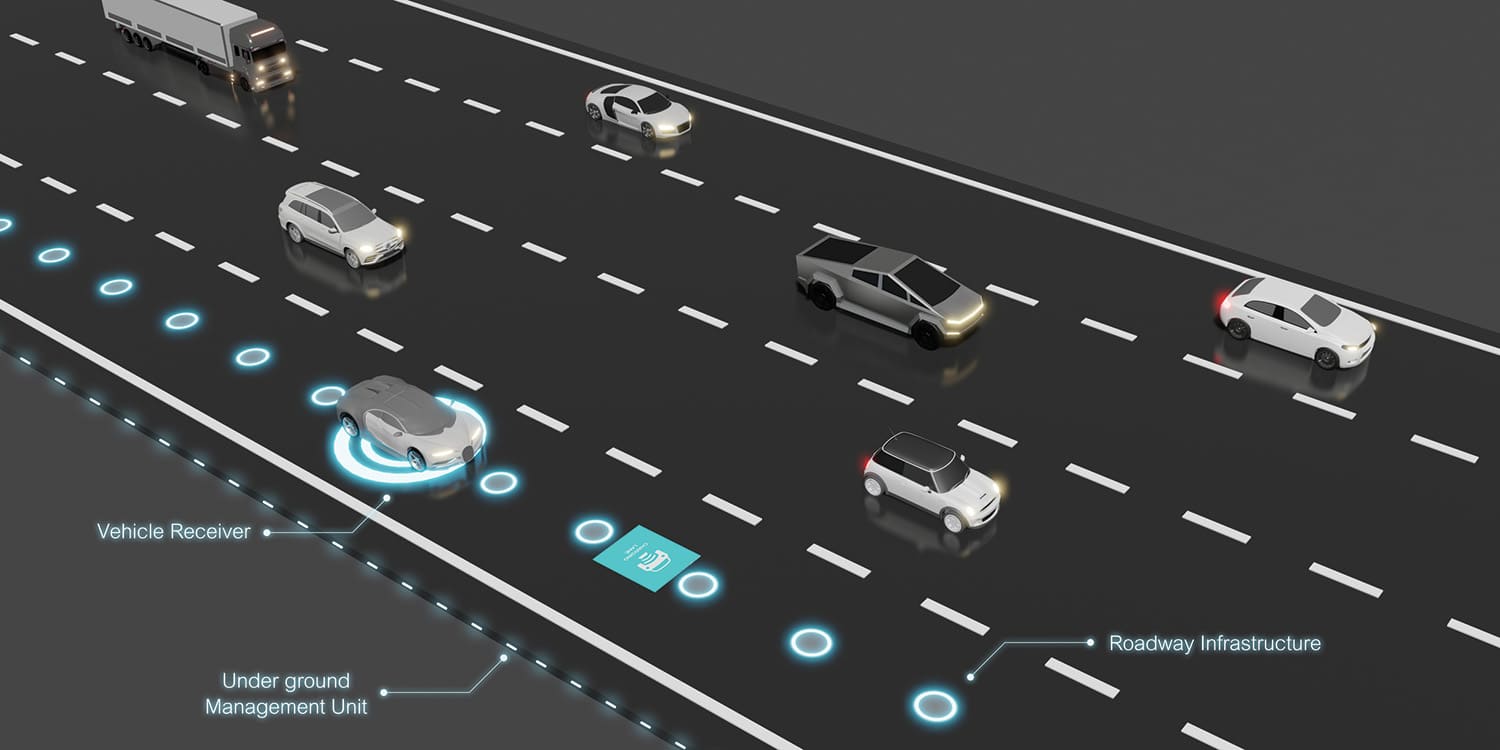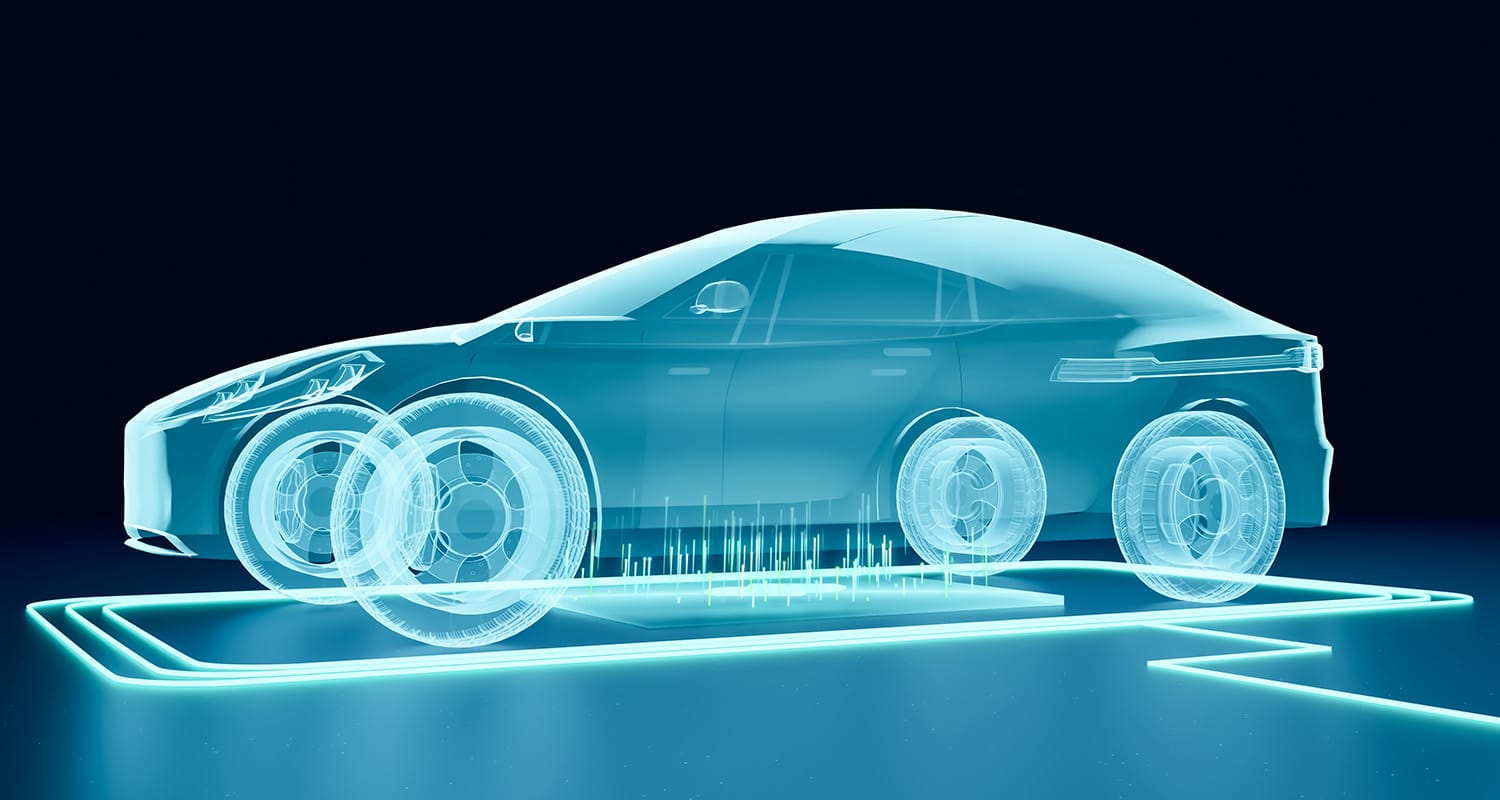
Last November, America’s first stretch of wireless charging road opened in Detroit with great fanfare. While the new section of road with inductive charging is only ¼ of a mile long, its opening marked an important first step towards a future where electric vehicles can recharge while driving down the road, stopped at lights or pickup points, or while parked.
The Detroit milestone has been in the works since 2021 when Michigan Governor Gretchen Whitmer announced her administration’s commitment to installing America’s first “electrified road.” Two years later, the state took the first steps by opening the newly installed section of wireless charging roadway in Detroit’s Corktown neighborhood.
While installing ¼ mile of wireless charging road may seem modest, EV experts say this is an exciting first step.
“This is a great look at the potential of EV technology,” said Marc Remmert, an electrical engineer who serves as the Director of MEP Engineering services for WGI, Inc. “It’s the first step towards a future where our electric vehicles charge themselves while we use them, and even when they are parked.”
According to Remmert, wireless charging is nothing new. In fact, it was introduced in the 1890s, when the first patent to charge an electric vehicle through induction was granted. The same concept that allows us to wirelessly charge our smartphones applies to cars.
“It’s simple engineering,” says Remmert. “Coils are installed in the road or parking spaces. When a receiver on a vehicle is detected, an electrical current is passed through the coil, generating a magnetic field the car receiver picks up and translates back to energy it can store in its onboard battery. As an electrical engineer, it’s exciting to see a technology that has existed for over a century begin to make its way to widespread commercial use.”
Inductive charging roadways require the installation of copper charging coils beneath the road’s surface. Each is linked, providing a continuous electric charge along the length of the system. EVs must have a receiver installed underneath the vehicle to receive the charge. Eventually, mass-produced EVs will likely have these receivers installed when they are being built. However, retrofitting existing EVs appears to be a relatively simple process that requires the installation of a special plate on the bottom of the vehicle and connection to the vehicle’s battery bank. For the Detroit installation, the in-ground coils only activate when a vehicle with a receiver passes over the coils, and data suggests the roadway is no more dangerous for pedestrians, drivers, and animals because of the installed coils.
Michigan’s partner in the Corktown project is Electreon, an Israeli company with experience installing EV-charging roads in Israel and Europe. The primary focus of the Detroit project is on public buses and last-mile delivery vehicles. Since the technology is still relatively young, the company is starting by installing it in places that can provide more charging time, such as bus stops, delivery zones, and stoplights.
Charging While Parking
According to Bob Andrews, founder of Zevtron, a national EV software and hardware provider, inductive charging is especially well-suited to parking facilities.
“The longer an EV sits in one spot, the more effective and efficient inductive charging becomes,” said Andrews. “That potentially makes parking the perfect environment for inductive charging.
“It could also solve one of the primary challenges of implementing EV charging in places like airports, where vehicles may be parked for days at a time,” continued Andrews. “Airports are often forced to integrate valet services into their EV programs because travelers are often parked for longer periods than it takes to actually charge the vehicle.”
In that situation, the EV owner must rely on the valet to operate the charger, plug it in, and ensure the car is charging properly. However, with inductive charging, the valet would only have to park the car in an inductive charging space. The vehicle’s owner could manage the charging session remotely with an app.
“I recently spoke with a Tesla owner who likes to go on cruises,” said Andrews. He complained that one of his biggest sources of frustration while he’s on a cruise is checking the status of his car on his smartphone app and watching his car’s battery steadily drain. If he was parked in a facility with inductive charging operated with smart charging technology, he would be able to monitor his vehicle’s charge and manage the charging session while he was on the cruise.”
Andrews points out that inductive charging could also offer potential operational benefits to parking owners.
“With inductive charging, you wouldn’t have charging cords in constant use and probably misused by EV owners,” said Andrews. There are obvious safety and aesthetic benefits to not having cords lying around, twisted, and in the way. You also avoid the wear and tear charging cords experience, which can lead to the need for costly repairs or replacement.”
Andrews also points out that inductive charging could be an important part of the industry’s move to contactless parking.
“Much of the industry’s focus over the past six or seven years has been on providing a frictionless, or touchless, parking experience,” said Andrews. “Inductive charging could fit nicely into that trend since EV drivers just need to pull into a charging spot to charge wirelessly. Parking facilities should provide a unified experience combining parking and EV charging in a single transaction. Adding inductive charging to that equation would also make that unified parking experience frictionless.”
Challenges Ahead
As attractive as inductive charging is, there are still challenges to be faced before it can be relied upon to meet a significant portion of EV charging needs. The first is cost. The initial cost of installing inductive charging technology is higher than plug-in stations. There are also operational costs associated with inductive charging because these systems consume additional energy resulting from energy losses during wireless transfer. Still, it’s reasonable to assume that these costs will come down as the technology is refined and more inductive charging providers emerge.
According to WGI’s Remmert, the next challenges aren’t technological—the technology is there. Remmert says the biggest challenges will be financial.
“A coordinated public/private development structure will fuel this technology,” said Remmert. “It will require federal investment for roadways and R&D and follow along venture capital to monetize and maintain the infrastructure to continue to push this forward. We need well-capitalized visionaries to invest in building it out in longer stretches that can withstand various weather conditions.”
Despite these challenges, inductive charging is a promising technology that promises to make driving an EV more convenient and manageable. While we are many years away from universal inductive charging, Detroit’s introduction of a ¼ mile stretch of wireless charging road is an important—and exciting—first step. ◆
Bill Smith is a publicist and business writer specializing in the parking industry.
-
Bill Smithhttps://parking-mobility-magazine.org/author/bill-smith/December 1, 2021
-
Bill Smithhttps://parking-mobility-magazine.org/author/bill-smith/January 1, 2022
-
Bill Smithhttps://parking-mobility-magazine.org/author/bill-smith/March 3, 2022


ABM Announces Planto Build First-of-its-Kind EV Ecosystem Hub
ABM (NYSE: ABM), one of the nation’s largest providers of


Ready, Set, Plug-In
EV Readiness Perspectives

Electric Vehicle Charging Operations Research
Preliminary Results


ABM Announces Planto Build First-of-its-Kind EV Ecosystem Hub
ABM (NYSE: ABM), one of the nation’s largest providers of










